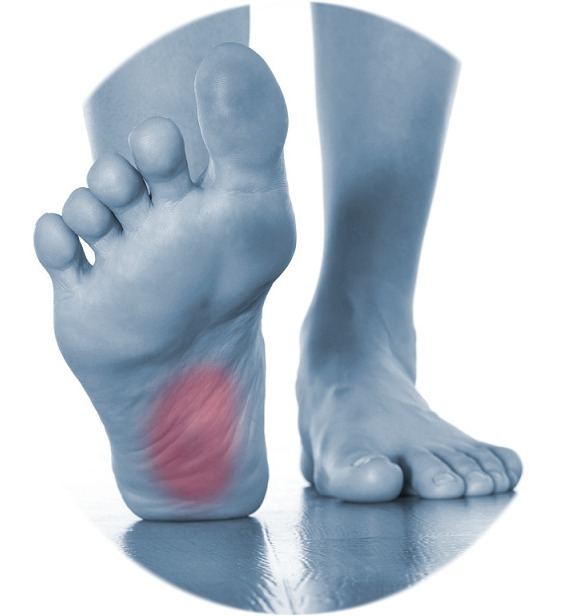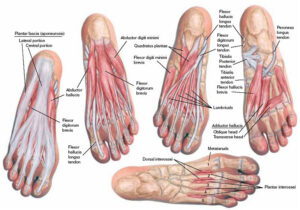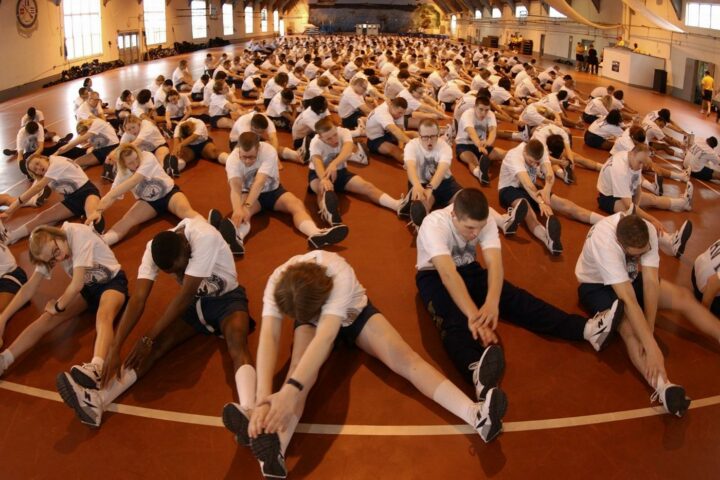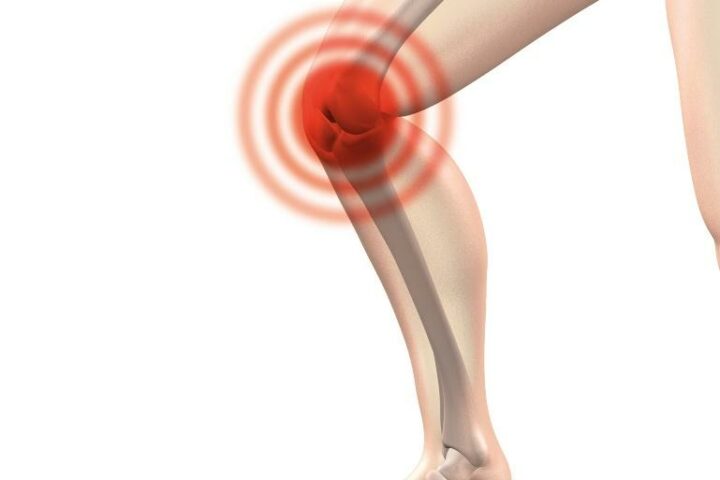Plantar fasciitis can be debilitating. It feels like someone is trying to tear apart the bottom of your foot with an ice pick. Anyone who has had to deal with this problem knows the type of pain I’m talking about. So, what actually happens in plantar fasciitis? First we’ll take a deeper look at the foot to get a better understand of how this problem develops.
To give some scope, the foot is amazingly intricate. It’s composed of 28 bones, 30 joints, 19 muscles, and over 100 ligaments. All of this complexity is necessary because the foot has to accomplish contradictory goals. When we step and the foot makes contact with the ground, it has to be soft and collapsible so that it can absorb the shock of the ground. When we push off, the foot has to be rigid so that it can propel us forward. If you want to make someone laugh, ask an engineer to make you something that has to both absorb and transfer energy extremely efficiently.
How does the foot accomplish these tasks? It has 5 distinct layers, each one made up of different muscles, tendons, and ligaments, providing a unique structural support system. The most superficial of these layers is the plantar fascia. Deep to that are 4 layers of the intrinsic muscles and tendons of the foot. What happens in plantar fasciitis is that these supporting muscles in the foot don’t or can’t fire appropriately. Because the muscles cannot work to help absorb or transfer load, all that stress gets absorbed somewhere else, namely the plantar fascia. The function of the plantar fascia is supposed to be support to these muscles, but in the case of plantar fasciitis, this piece of connective tissue acts as both the shock absorber and the rigid level for propulsion.
So now one piece of connective tissue is doing the job of 19 muscles, and of course it becomes inflamed and painful. The plantar fascia is connected to the calf muscles by way of the heel, and many people experiencing plantar fasciitis also experience calf tightness. So many people end up stretching their calves and their feet to try and relieve the pain and tightness. But as we discussed, that poor plantar fascia is already being over-pulled and over-stressed. Stretching has the potential to increase the load in an already over-loaded tissue! It may provide some short term relief but these symptoms typically come back unless you deal with the root of the problem.
So, how to manage the problem? First, stop stretching. If you need to do something, try a foam roller for your calves. Second, perform some exercises for the intrinsic muscles of the foot. Well over 90% of the plantar fasciitis patients I see have zero control over the small foot muscles. You can work them by practicing splaying your toes. While barefoot with your foot flat, lift up and spread all 5 toes so you can see daylight between each one. Then set them down one at a time from pinky toe to big toe as wide apart as possible.
You can also practice towel scrunches, simply lay a towel down lengthwise and keeping your heel on the ground use your toes to scrunch it all the way up to you. Making sure you are loading and pushing off of the foot correctly is also very important. Try a single leg squat or lunge. If you catch your foot rolling in or out uncontrollably, chances are that’s also happening while you’re walking, causing abnormal load in the foot. Addressing restriction in the joints of the feet is necessary as it allowa for normal function of the deep layers of the foot. Your local Chiropractor or Physical Therapist will be able to help you with this.
Choice of footwear is also very important. Some shoes (especially high heels and some men’s dress shoes) have a very narrow toe box, This compresses joints and muscles, changes their function, and over time can form a bunion. Some shoes have an extremely rigid sole that doesn’t allow for normal foot function. Flip flops can cause you to have to grip with your toes during walking to keep them from falling off. All this changes your gait and muscle recruitment, and can stress the plantar fascia.
An assessment of your gait and anatomical foot variations is also extremely important. Some people require orthotics, whereas others have been using self-prescribed orthotics that are actually making things worse. Some people are simply walking on the inside or outside of their feet. I have seen plantar fascia pain vanish instantly when cueing appropriate foot mechanics while walking.
Well there you go! Probably more than you wanted to know about feet. But the most important thing if you have persistent pain is to get assessed by a knowledgeable practitioner, because accurate diagnosis is the first step to accurate treatment.





